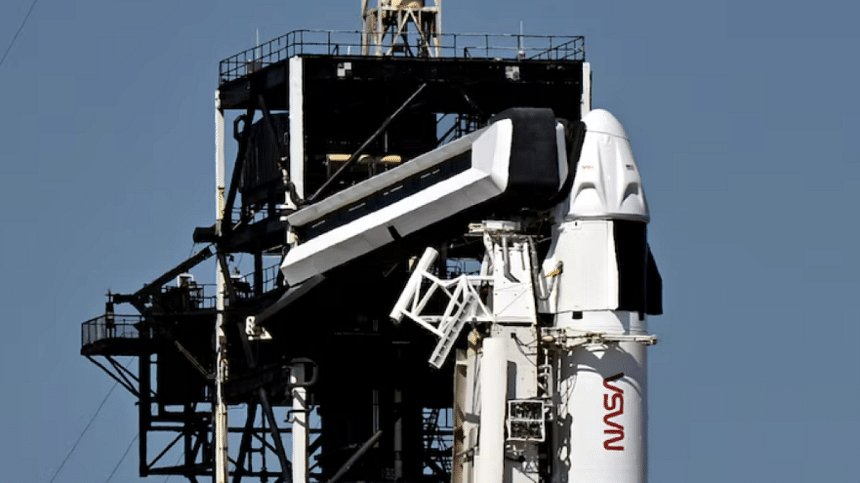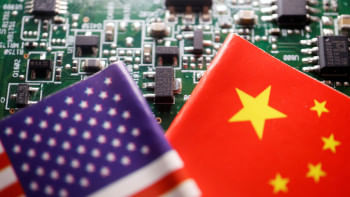Strategic choices in the new space race

President Vladimir Putin had to complete one crucial task before ordering Russian forces to launch a massive multipronged assault on Ukraine on February 24, 2022. He ensured systematic disruption of Ukraine's terrestrial internet services, crippling communication vital for military and civilian planning and operations, illustrating the modern battlefield's dependence on digital infrastructure. Starlink, SpaceX's satellite-based internet service, quickly stepped in with satellite-based internet, providing a lifeline that propped up Kyiv's strategic and defence operations.
Starlink's high-quality internet became a decisive factor in the war, and both Ukraine and Russia—bypassing US sanctions—used it to conduct drone and other tactical manoeuvres. And SpaceX became such an influential player that in September 2023, it could disallow Kyiv (by blocking internet service) to launch an attack on the Russian naval base at Sevastopol in Crimea, the Ukrainian territory that Russia illegally seized in 2014. It exposed the pitfalls of reliance on a single, albeit effective, service provider. Recently, under US President Donald Trump's major policy shift, Washington has threatened to suspend Starlink and other satellite-based services to Ukraine (to coerce Kyiv into signing the $500 billion rare earth minerals deal), raising questions about the reliability of such services during critical times such as conflicts or natural disasters. Sensing a business opportunity and strategic gap, Europe's EUTELSAT entered discussions with Kyiv, offering to replace Starlink, highlighting its desire to bolster position in the space industry. Meanwhile, Beijing is pressing ahead with developing its ambitious Qianfan (Thousand Sails) mega-constellation project as the China-US battle for tech and strategic supremacy rages on.
Washington's current dominance in the space industry extends beyond Starlink. Other US companies, like Amazon's Project Kuiper, are also developing their mega-constellations, promising to deliver high-speed, low-latency broadband internet globally. These ventures represent significant private sector investment and technological innovation, further solidifying the US position in the space-based services market. Several US companies, such as Blacksky and Boeing, offer high-resolution, real-time satellite imagery crucial for winning any modern-day war.
While facing economic and technological constraints, Russia has long maintained a strong presence in space. Though sanctions and the war have impacted its focus, it is committed to continuing its satellite navigation system (GLONASS), satellite communications, and remote sensing capabilities. While its current endeavours may not match the scale of US or Chinese projects, it still boasts a formidable infrastructure and expertise. In November last year, Roscosmos sent 53 satellites into orbit, the highest number for the Russian space agency in a single launch.
All these drive home a critical truth: the space industry is undergoing a seismic shift, transforming from a technological marvel to a strategic battleground. The provision of global internet and satellite imagery, once considered niche applications, are now vital lifelines, shaping the very fabric of modern society and international relations. This emerging reality demands that nations make informed decisions to minimise commercial and strategic risks.
A global space race – ignited by the dangers of depending on single-source providers—has started with the US, China, and the EU vying for dominance. China's Qianfan is rapidly expanding, offering a comprehensive suite of space-based services to nations across the globe, particularly in the Global South. This trend will likely continue as Beijing aims to become a dominant space player and secure a strategic advantage over its rivals.
The EU is also accelerating the development of EUTELSAT, emphasising sovereignty and reliability. Last month, it announced the deployment of the world's first 5G non-terrestrial network connection, leveraging its OneWeb LEO (Low Earth Orbit) satellites. These developments signal a move from a US-centric model towards a more diversified and potentially fragmented market.
How can nations navigate this emerging industry, which might soon become an economic and strategic lifeline? Should they rely on established US-based providers, embrace Europe's or China's burgeoning offerings, or invest in regional or national alternatives? The answer is not straightforward.
First, diversification is paramount. Nations must explore partnerships with multiple providers and invest in resilient, redundant infrastructure. Second, countries must actively participate in international forums to establish norms and standards for space activities. The lack of common protocols and standards could lead to technological fragmentation, hindering international cooperation in vital areas such as disaster response and environmental monitoring. Third, nations must invest in space capabilities, foster domestic innovation, and reduce reliance on external providers. This does not mean isolation but building a robust foundation for strategic partnerships and collaboration. Fourth, the commercial implications should be taken into account. The space-based services market is a multi-billion-dollar industry offering significant economic opportunities. Nations must create regulatory frameworks encouraging innovation and investment while protecting national security interests. Finally, the potential for militarisation of space must be addressed. As space-based assets become increasingly crucial for military operations, the risk of conflict in orbit intensifies. Nations must engage in diplomatic efforts to prevent an arms race in space and promote the peaceful use of this domain.
The emerging space race presents both challenges and opportunities. By making informed decisions, investing in resilient infrastructure, and fostering international cooperation, nations can navigate this orbital shift and minimise the associated risks, ensuring that space remains a domain for the benefit of all humanity.
Dr Sayeed Ahmed is a consulting engineer and the CEO of Bayside Analytix, a technology-focused strategy and management consulting organisation.
Views expressed in this article are the author's own.
Follow The Daily Star Opinion on Facebook for the latest opinions, commentaries, and analyses by experts and professionals. To contribute your article or letter to The Daily Star Opinion, see our submission guidelines.

 For all latest news, follow The Daily Star's Google News channel.
For all latest news, follow The Daily Star's Google News channel. 










Comments